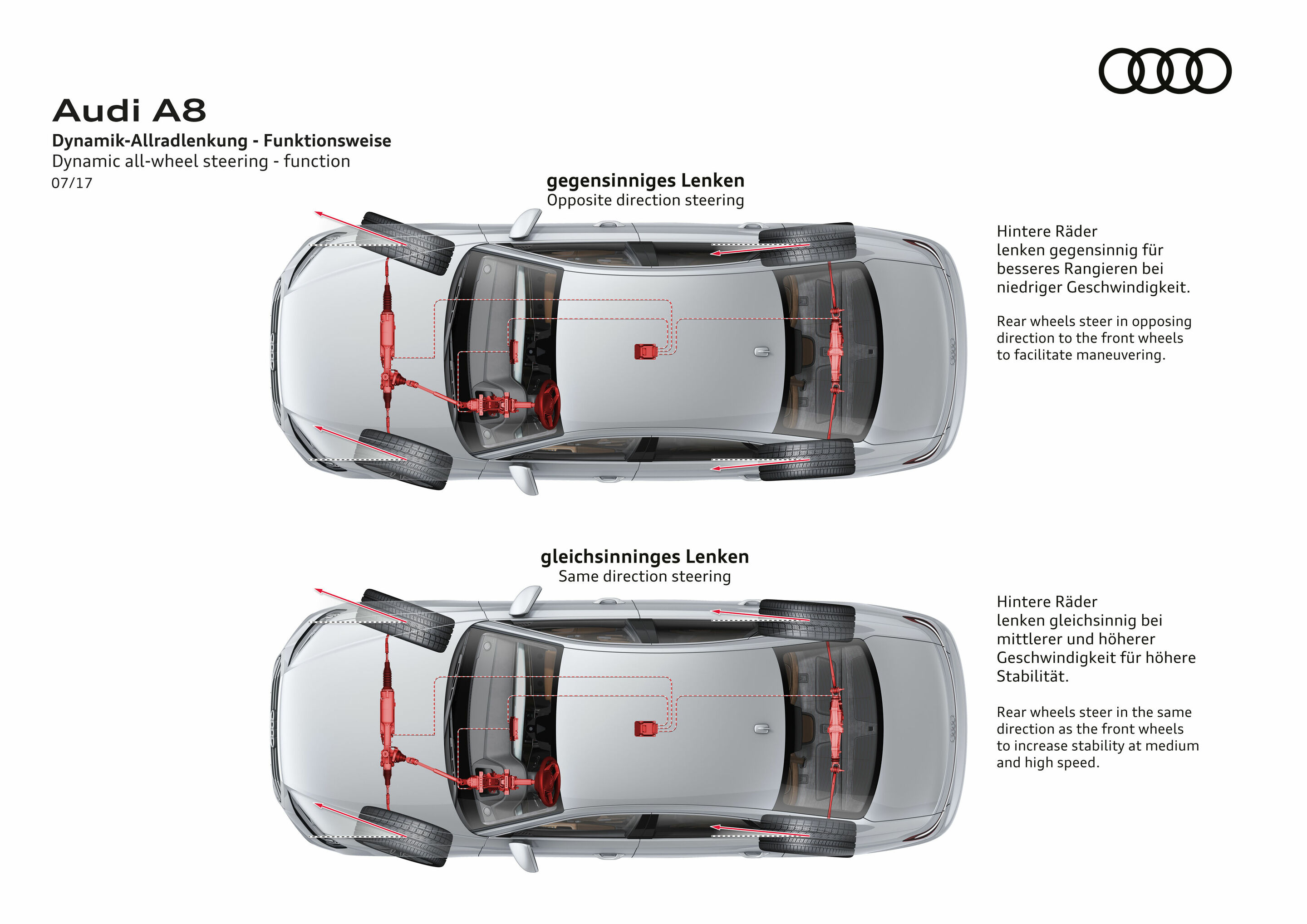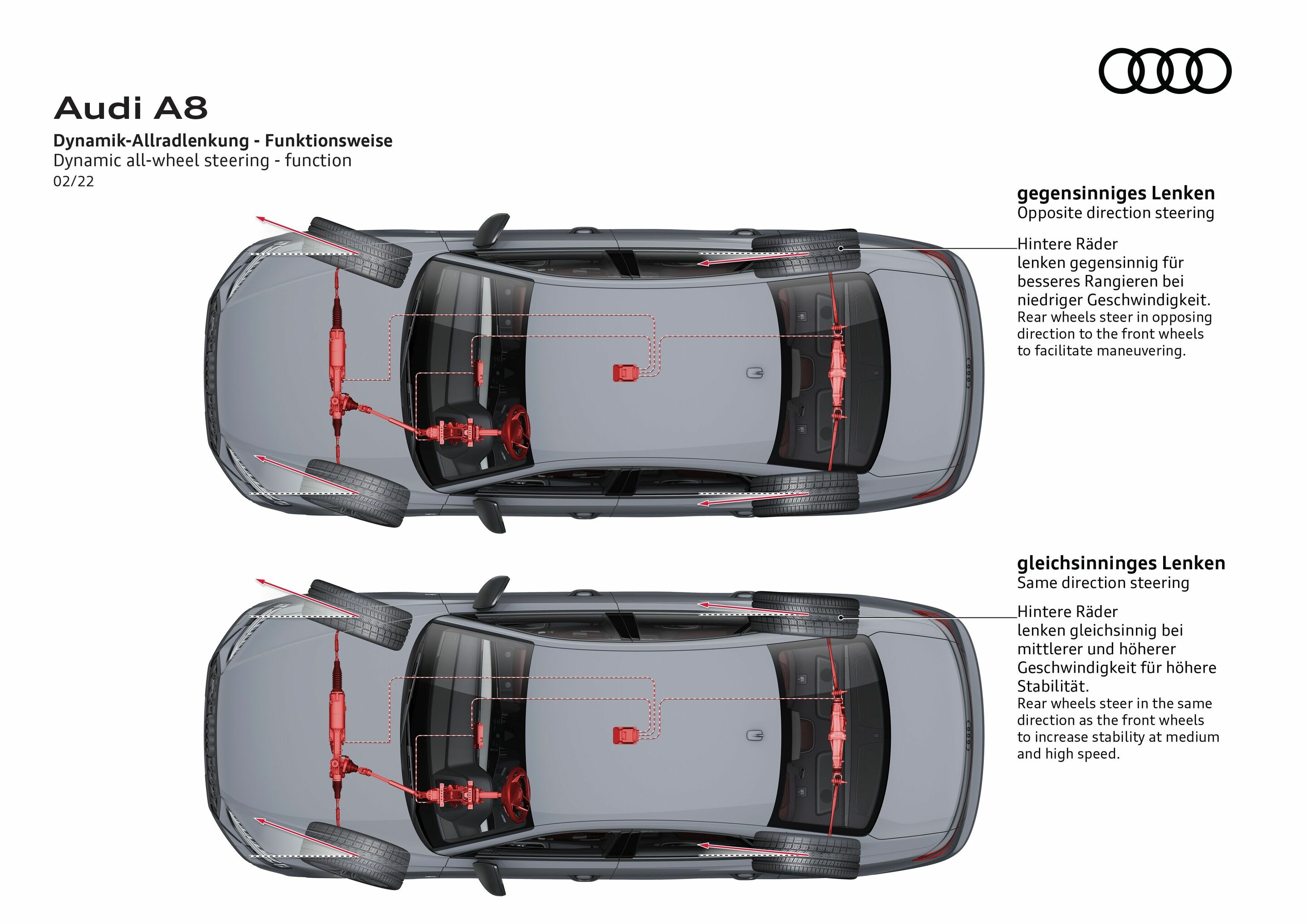Search
All search results for "dynamic all-wheel steering"
(291)
 Audi Q3
Audi Q3
Audi Q3
The new Audi Q3 is our impressive all-rounder in the compact segment. Now in its third generation, the SUV stands out with its dynamic, muscular look. As a digital companion for everyday life, the Q3 is ideally equipped to deliver an inspiring driving experience thanks to its modern driver assistance systems and lighting technology from the full-size class. On the inside, the modern steering wheel control unit enables a new operating experience and creates even more storage space and a more spacious feel.
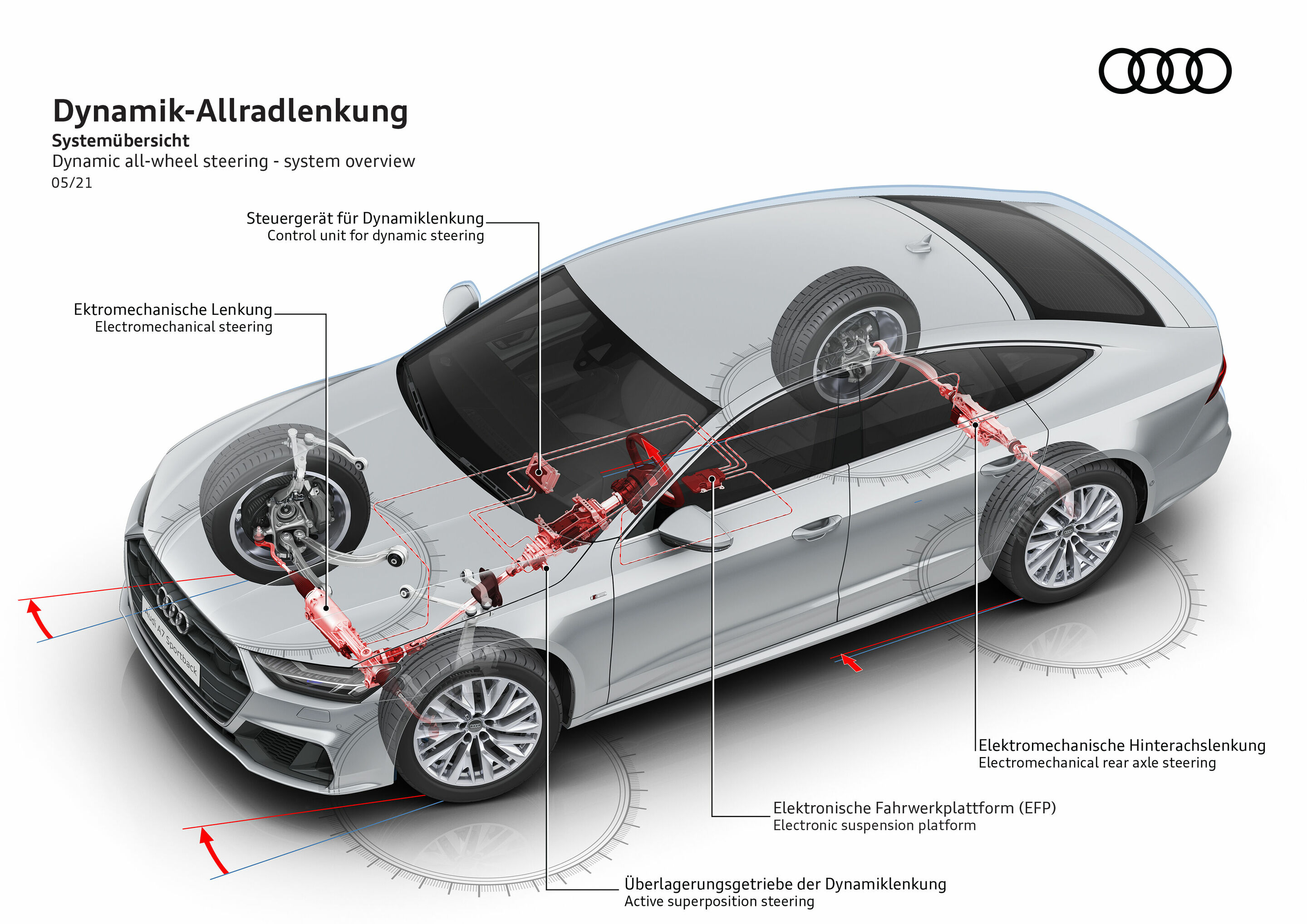 Glossary: Technical terms about steering
Glossary: Technical terms about steering
From A as in all-wheel steering to Y as in yaw moment – steering systems bring a host of technical terms with them. In the glossary for TechTalk Steering, we will explain the most important terms.
A for all-wheel steering: Instead of only steering the front wheels, as is customary, vehicles with all-wheel steering can steer the back wheels. For that reason, this is also sometimes called rear-axle steering. At low speeds, the back wheels turn up to five degrees in the opposite direction to the front wheels. This reduces the turning radius significantly and increases manageability. At the same time, the driver feels more comfort and stability at higher speeds because the back wheels turn up to two degrees in the same direction as the front wheels. The signal to turn is electrically transmitted to actuators and the suspension arms in the rear suspension. Dynamic all-wheel steering, which can also vary the steering ratio by using superimposition gearing on the front axle, is an expansion of the system. D for dynamic steering: Dynamic steering varies its degree of implementation up to 100 percent, depending on driving speed, steering angle, and the mode selected in the Audi drive select dynamic handling system. The central component is the superimposition gearing in the steering column. It conveys the driver’s steering commands just as directly as in a vehicle with a conventional steering column. There is also a direct mechanical link to the actual steering gear on the front axle and the associated feedback to the forces on the wheels. When the superimposition gearing is controlled by the electric motor, it increases or decreases the steering angle, which constantly adjusts the steering ratio according to the given driving situation. That improves steering comfort and tracking behavior in accordance with speed and driving situation.
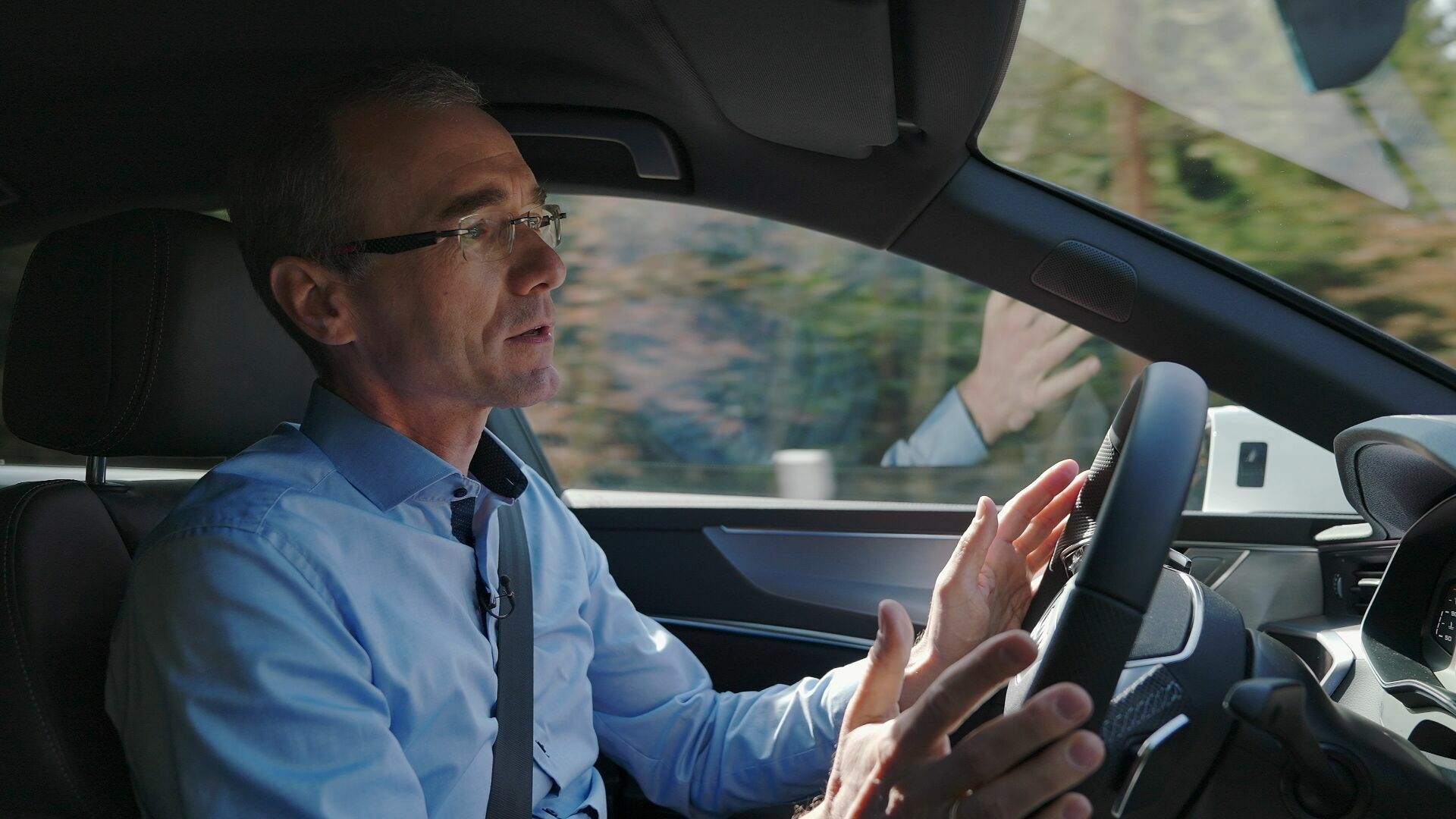 Fine-tuning the characteristics of the Audi steering system
Fine-tuning the characteristics of the Audi steering system
Interview with driving characteristics developer Carsten Jablonowski Basic calibration carried out virtually to create the typical Audi steering feel Different steering systems build on each other
Whether driving on winding roads in the Alps, a busy highway, or city streets filled with potholes on the way to the supermarket – a good steering wheel has to cover the entire spectrum of driving situations. In this interview, Carsten Jablonowski, Driving Characteristics Development Team Lead, explains the complex process of fine-tuning the chassis and steering, which is what gives an Audi its unique steering feel.
Mr. Jablonowski, how would you describe the typical Audi steering feel? When we’re behind the wheel of a car, its individual steering feel depends on a variety of factors. Among other factors, the overall design, vehicle weight and weight distribution play a role, as do the individual chassis components, the tires, and the steering system used. Now when I get into different Audi models, I get that familiar feeling after only a short time – the car steers effortlessly, smoothly, and precisely with little effort. And this is true regardless of whether I’m parking, driving through hairpin bends, or simply cruising around the city. Because an Audi steering wheel generates greater torque, I’m able to negotiate curves precisely and with agility. Our models change direction with a high degree of precision, especially when driving fast through alternating turns. On the other hand, an Audi will smoothly drive straight ahead at fast highway speeds and isn’t jittery at all. This means I can always feel how the car is interacting with the road. The steering wheel gives me direct feedback regarding the car’s balance, level of grip, and road unevenness such as bumps and ruts. All in all, this is important for a safe and pleasant driving experience. The vehicle development process takes up to five years.
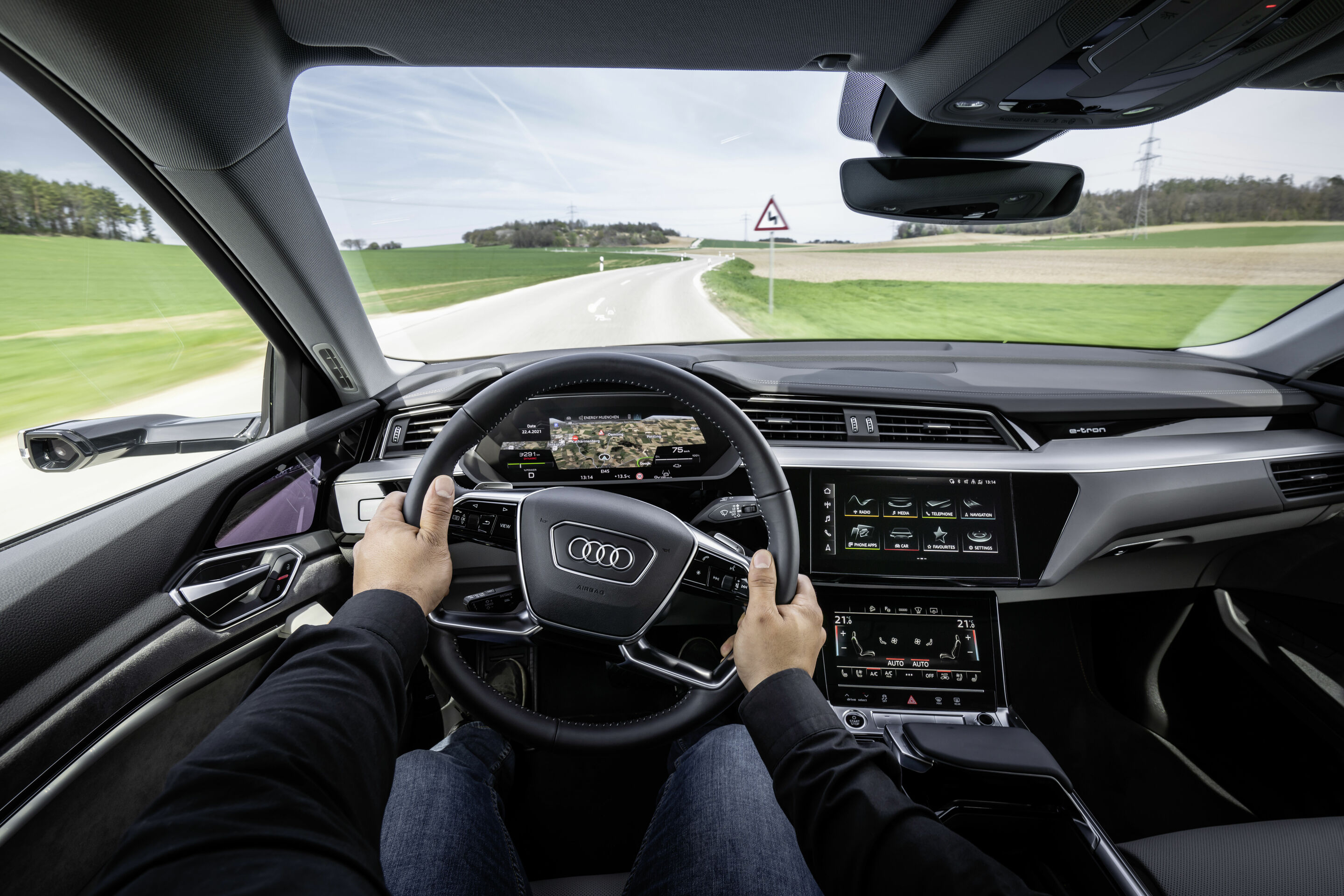 We’ve got the hang of it
We’ve got the hang of it
Effortless, precise, controlled – the steering philosophy at Audi New generation of steering wheels with touch screens and capacitive grip recognition Steering assistance functions for added safety and increased comfort Focus on sportiness and manageability – in the technology as well as the design
The steering wheel is almost as old as the automobile itself. And it is a given that a vehicle will drive in the direction desired according to the motion of the steering wheel. But the technologies behind it are complex and have become increasingly sophisticated in recent decades. The developers at Audi are working on the perfect combination of dynamic handling and comfort. At the same time, steering assistance functions offer added safety and support in everyday driving – for changing lanes, swerving, and parking. As a result, the steering wheel is increasingly emerging as a communication device, moving away from the standard wheel and toward becoming a high tech command center.
What constitutes the steering feel typically found in an Audi? Hand moment and feedback are crucial for steering feel. Every Audi can be smoothly and precisely steered with minimal effort while maneuvering and parking – the car drives effortlessly. That is another way of saying it has low hand moment. This increases at higher speeds. The result is agile handling and optimized driving dynamics – the vehicle can be moved through curves with precision. Its sporty character is undergirded by a controlled, stable feeling in the steering wheel’s middle position. This is noticeable during steady, straight driving at expressway speeds, which is affected not only by speed, but also by side winds that arise and road conditions. The driver still has to countersteer, but with significantly less hand moment. A sensor continuously measures the wheel’s steering angle.
 Nine generations of success: the new Audi A6 meets its elders
Nine generations of success: the new Audi A6 meets its elders
The ninth generation is now on sale in Europe – the A6 Avant. A great opportunity for a family photo with Audi employees presenting their C models from across the generations.
The all-new Audi A6 Avant is more dynamic, efficient, and digital than ever before and stands for first-class travel like no other vehicle in the premium full-size class. It has been available in dealerships across Europe since May 16, and the A6 Sedan will be launched at the end of July. The two new A6 models are based on the Premium Platform Combustion (PPC) and are powered by modern gasoline and diesel engines. The mild hybrid technology MHEV plus supports the combustion engine, enhances performance and driving comfort, and reduces CO2 emissions. Whether on long trips or in the city, the adaptive air suspension and all-wheel steering ensure a smooth ride and agile handling in equal measure. The all-new Audi A6 Avant unites elegant, dynamic design with exceptional aerodynamics. Audi is also offering both the Avant and Sedan as plug-in hybrids. With the ninth generation built in Neckarsulm, Audi is continuing the success story of the C series. With the Audi 100, the brand with the four rings succeeded in moving up into the premium mid-size segment in 1968. The Audi 100 (C1 to C4) won the Golden Steering Wheel five times; it was also named Car of the Year twice and World Car of the Year once. A total of 3.2 million Audi 100s were sold, underscoring the success and popularity of the model series. The generations that followed the C1 demonstrated Vorsprung durch Technik with numerous innovations such as the fully galvanized body, optimized aerodynamics, and highly efficient engines. The Audi 100 has been called the Audi A6 since 1994. Audi has built almost ten million C-series vehicles since 1968 – 9,836,762 as of April 2025 to be exact. Big numbers from a long history. However, the enthusiasm and passion for the C series go much deeper than that, in the Audi workforce too.
 A class act: the new Audi A6 Avant
A class act: the new Audi A6 Avant
Dynamic design and exceptional aerodynamics meet high demands for everyday and long‑distance driving Partially electric driving, enhanced efficiency, and greater performance: the mild hybrid technology MHEV plus The perfect blend of sportiness and comfort: adaptive air suspension and all-wheel steering
The new Audi A6 Avant is more dynamic, efficient, and digital than ever. It stands for first-class travel like no other vehicle in the premium full size class. Modern gasoline and diesel engines increase performance and reduce CO2 emissions thanks to the mild hybrid technology MHEV plus. On long journeys and in the city, the adaptive air suspension and all-wheel steering ensure a high level of driving comfort and agile handling in equal measure. The outstanding drag coefficient of 0.25 – the best value of an Audi Avant with a combustion engine – means high efficiency and demonstrates the perfect interplay of form and function. The exterior reflects the vehicle’s sporty, elegant character and gives the A6 Avant a striking presence with new digital lighting technology. The model also impresses with its intuitive and systematically user-oriented operating and infotainment concept with Audi MMI panoramic display and front passenger display.
Audi CEO Gernot Döllner: “We are writing the next chapter in our Avant history: The new Audi A6 unites an elegant and dynamic design with exceptional aerodynamics. Efficient yet high‑performance drive systems and cutting-edge suspension technology combine sportiness with a high level of comfort, making traveling in the A6 a first-class experience.” With this model, the company is also continuing its major product initiative that began in 2024. The modernization and rejuvenation of the product portfolio is part of the Audi Agenda, with which Audi is positioning itself for the future in the face of intensified competition. “With the A6, we are now renewing an important model series,” said Döllner.
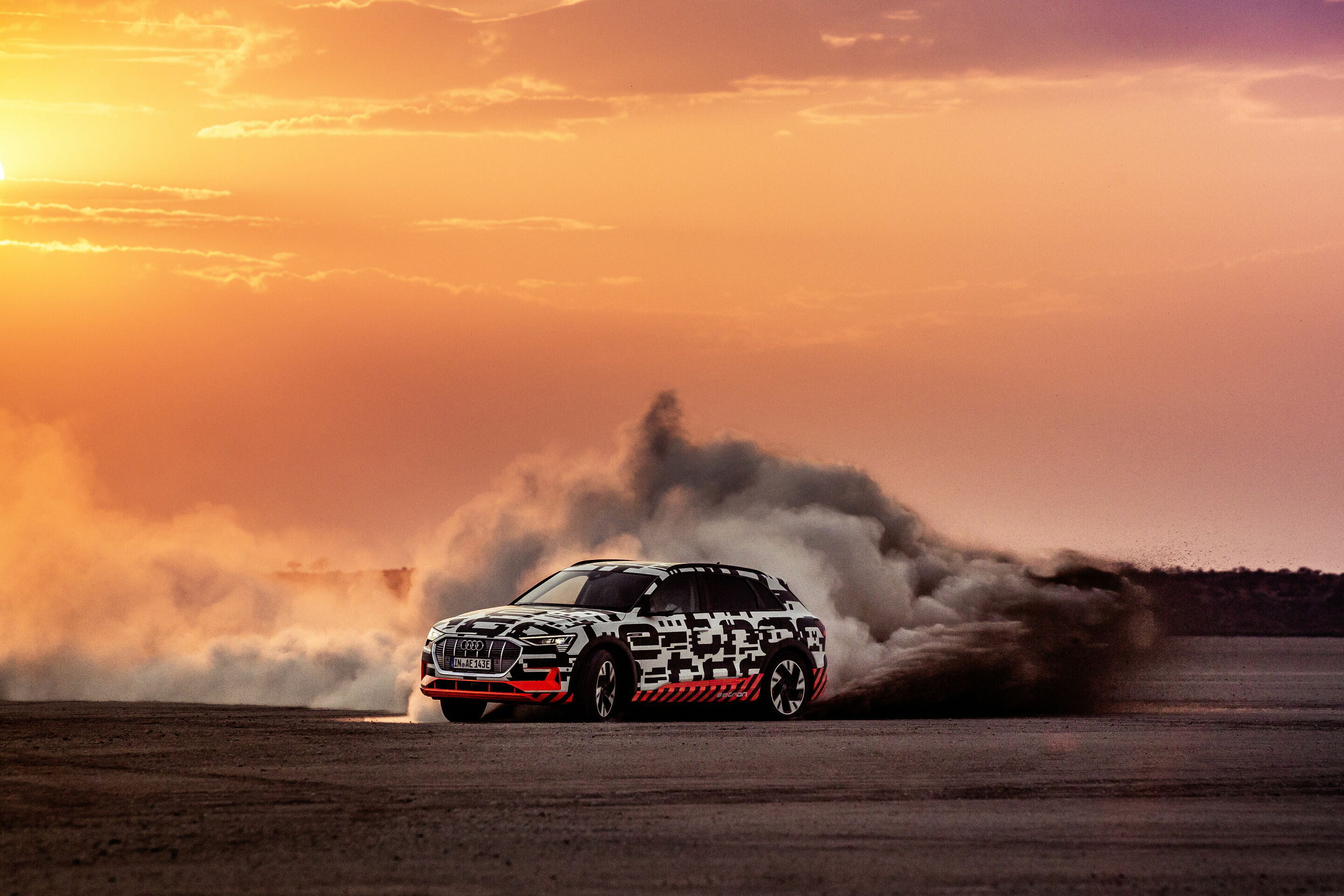 Power play: Audi e-tron prototype with electrifying dynamics
Power play: Audi e-tron prototype with electrifying dynamics
New quattro generation: the electric all-wheel drive Enormous driving pleasure: powerful traction on different terrain Wide-ranging character: from long-distance tourer to offroad adventurer
With driving dynamics tests on Namibia’s salt flats and savanna, the Audi e-tron prototype is at present impressively demonstrating its handling qualities. All made possible thanks to a new generation of the quattro drive – the electric all-wheel drive. In conjunction with the versatile suspension, its low center of gravity and the powerful electric motors, the electric SUV offers powerful traction, outstanding dynamics and unshakable stability on disparate terrain.
The scenario: drifting across the sand flats and offroad through the savanna The dried-out salt lake on the edge of the Kalahari Desert measures 2 by 2.3 kilometers (1.2 by 1.4 mi). Its porous, hard surface with fine-grained gravel offers a low coefficient of friction – optimal conditions to experience the Audi e-tron prototype in a controlled drift and get a feel for its lightning-fast acceleration coupled with high traction. This is possible thanks to the electric all-wheel drive and numerous suspension systems that are intelligently interconnected, most notably the Electronic Stabilization Control (ESC), the Audi drive select dynamic handling system and the standard air suspension. On rough terrain it increases the ground clearance of the Audi e-tron prototype at the push of a button by 50 millimeters (2.0 in). At the same time the ESC optimizes the traction and brake control and increases the effect of the electronic differential lock for optimum power transfer and propulsive power. As such, the electric SUV effortlessly takes even the sandy soil of the African savanna in its stride. The two electric motors provide the ideal power source for the high-precision, ultrafast electric quattro. In boost mode they provide up to 300 kW and a maximum 664 Nm (489.7 lb-ft) of torque.
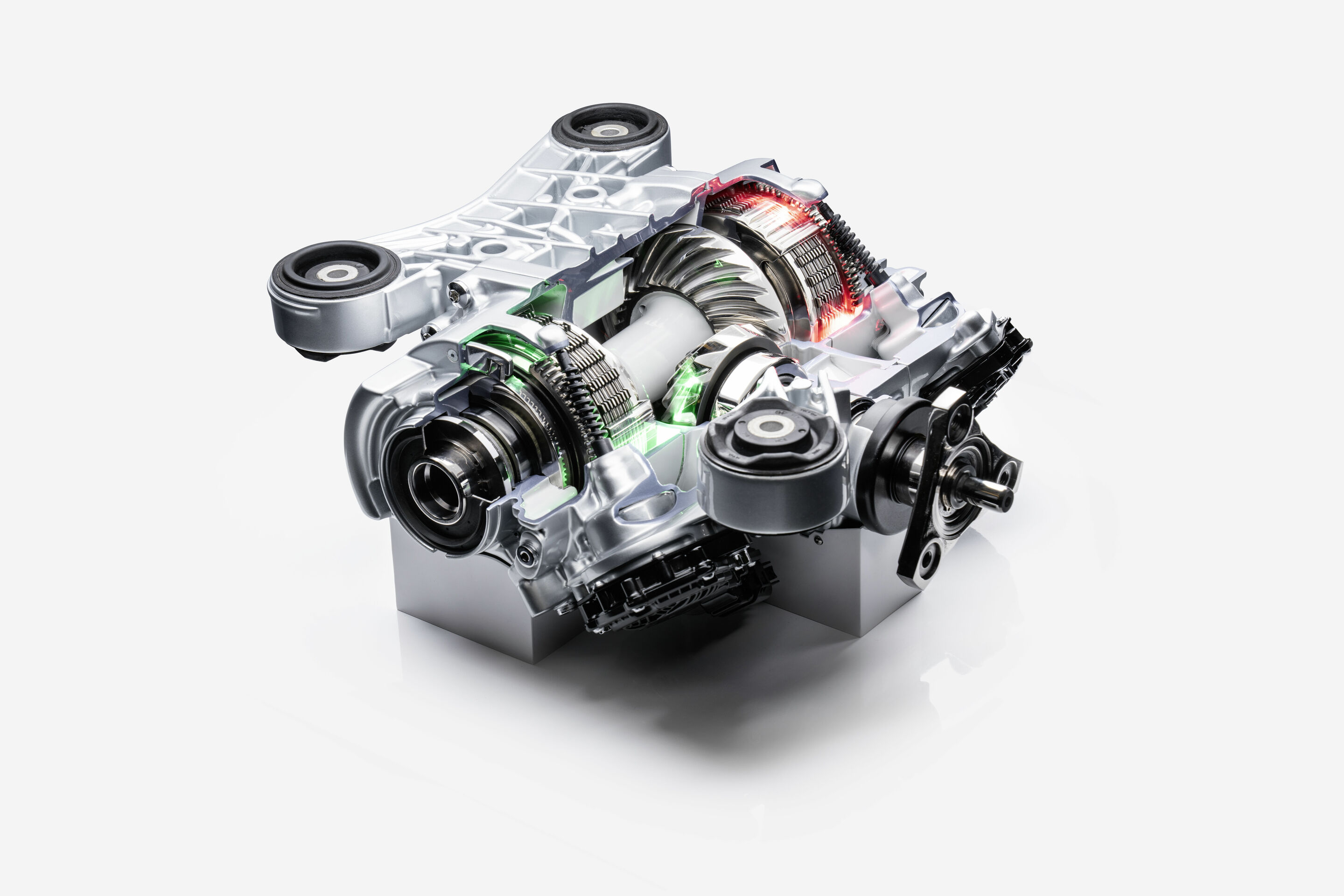 A matter of lateral: the torque splitter in the new Audi RS 3
A matter of lateral: the torque splitter in the new Audi RS 3
Active rear-axle torque vectoring for maximum driving dynamics Unmatched acceleration and top speed in the segment Two new RS 3-specific driving modes for circuits and controlled drifts
The new Audi RS 3 represents the epitome of unadulterated driving dynamics. This is Audi’s first vehicle to feature the RS Torque Splitter, which distributes drive torque between the rear wheels in a fully variable manner. In combination with the 400 PS five-cylinder engine, the compact sports car is supremely agile. The 2.5 TFSI now unleashes 500 Nm of torque, 20 Nm more than in the previous model. The Audi RS 3 sprints from zero to 100 km/h (62 mph) in 3.8 seconds and reaches a top speed of 290 km/h (180 mph) – record numbers in the segment.
How does the RS Torque Splitter work? The RS Torque Splitter makes active, fully variable torque vectoring between the rear wheels possible. Unlike the rear axle differential and the previous multiple disc clutch package on the rear axle, the torque splitter uses one electronically controlled multiple disc clutch each on the respective drive shaft. During dynamic driving, the torque splitter increases the drive torque to the outer rear wheel with the higher wheel load, which significantly reduces the tendency to understeer. In left-hand curves, it transmits the torque to the right rear wheel, in right-hand curves to the left rear wheel, and when driving straight ahead to both wheels. This results in optimal stability and maximum agility – especially when cornering at high speeds.





